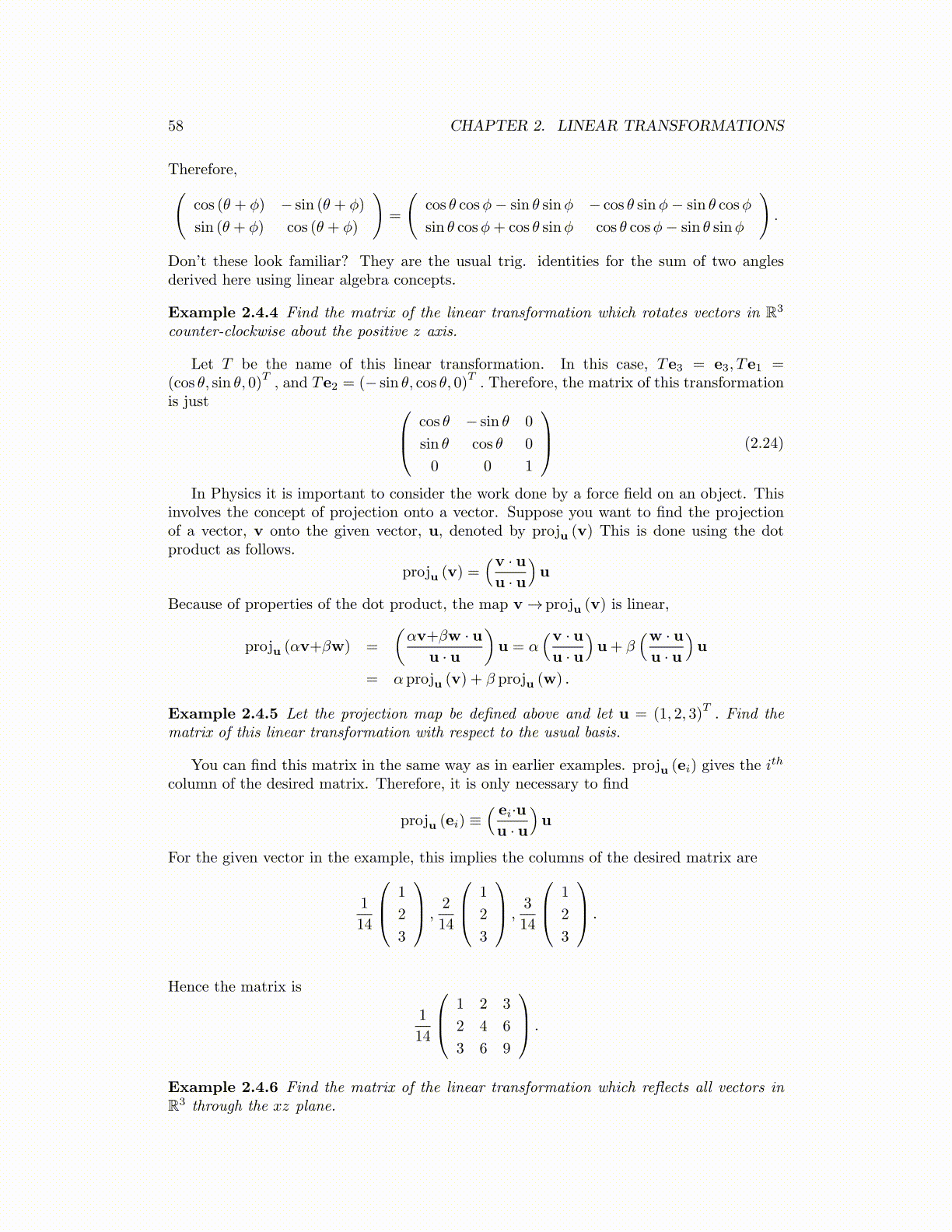
58 CHAPTER 2. LINEAR TRANSFORMATIONS
Therefore,(cos (θ + ϕ) − sin (θ + ϕ)
sin (θ + ϕ) cos (θ + ϕ)
)=
(cos θ cosϕ− sin θ sinϕ − cos θ sinϕ− sin θ cosϕ
sin θ cosϕ+ cos θ sinϕ cos θ cosϕ− sin θ sinϕ
).
Don’t these look familiar? They are the usual trig. identities for the sum of two anglesderived here using linear algebra concepts.
Example 2.4.4 Find the matrix of the linear transformation which rotates vectors in R3
counter-clockwise about the positive z axis.
Let T be the name of this linear transformation. In this case, Te3 = e3, Te1 =(cos θ, sin θ, 0)
T, and Te2 = (− sin θ, cos θ, 0)
T. Therefore, the matrix of this transformation
is just cos θ − sin θ 0
sin θ cos θ 0
0 0 1
(2.24)
In Physics it is important to consider the work done by a force field on an object. Thisinvolves the concept of projection onto a vector. Suppose you want to find the projectionof a vector, v onto the given vector, u, denoted by proju (v) This is done using the dotproduct as follows.
proju (v) =(v · uu · u
)u
Because of properties of the dot product, the map v →proju (v) is linear,
proju (αv+βw) =
(αv+βw · u
u · u
)u = α
(v · uu · u
)u+ β
(w · uu · u
)u
= α proju (v) + β proju (w) .
Example 2.4.5 Let the projection map be defined above and let u = (1, 2, 3)T. Find the
matrix of this linear transformation with respect to the usual basis.
You can find this matrix in the same way as in earlier examples. proju (ei) gives the ith
column of the desired matrix. Therefore, it is only necessary to find
proju (ei) ≡( ei·uu · u
)u
For the given vector in the example, this implies the columns of the desired matrix are
1
14
1
2
3
,2
14
1
2
3
,3
14
1
2
3
.
Hence the matrix is
1
14
1 2 3
2 4 6
3 6 9
.
Example 2.4.6 Find the matrix of the linear transformation which reflects all vectors inR3 through the xz plane.